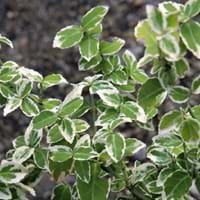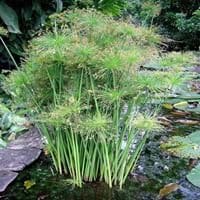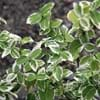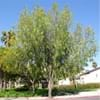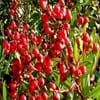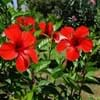Life Span
Perennial
Perennial
Type
Broadleaf Evergreen
Sedge or Rush
Origin
China
World/Pandemic
Types
Euonymus fortunei fortunei, Euonymus fortunei radicans, Euonymus fortunei vegetus
Not available
Number of Varieties
Not Available
Habitat
Hedge, Shady Edge, Woodland Garden Dappled Shade
Grassland, Wet lands
USDA Hardiness Zone
5-9
7-11
Sunset Zone
2b, 3a, 3b, 4, 5, 6, 7, 8, 9, 10, 11, 12, 13, 14, 15, 16, 17
H1, H2, 16, 17, 23, 24
Habit
Spreading
Spreading
Flower Color
Yellow green
Green, Brown
Flower Color Modifier
Not Available
Not Available
Fruit Color
Orange, Pink
Not Available
Leaf Color in Spring
Green, Dark Green
Green
Leaf Color in Summer
Green, Dark Green
Green
Leaf Color in Fall
Green, Dark Green
Green
Leaf Color in Winter
Green, Dark Green
Not Available
Leaf Shape
Elliptic and Ovate
Grass like
Plant Season
Spring, Summer, Fall, Winter
Spring, Summer, Fall
Sunlight
Full Sun, Partial Sun, Partial shade, Full Shade
Full Sun, Partial Sun, Partial shade
Type of Soil
Clay, Loam, Sand
Clay, Loam, Sand
The pH of Soil
Acidic, Neutral, Alkaline
Acidic, Neutral, Alkaline
Soil Drainage
Average
Poorly Drained
Bloom Time
Late Spring, Early Summer
Early Summer, Summer, Late Summer, Early Fall
Tolerances
Pollution, Salt, Soil Compaction
Drought
Where to Plant?
Ground, Pot
Container, Ground, Pot
How to Plant?
Cuttings, Seedlings, Semi-ripe cuttings
Bulbs, Divison, Rhizome division, Tubers
Plant Maintenance
Low
Medium
Watering Requirements
Medium
Do not let dry out between waterings, Keep ground moist, Keep the Soil well drained
In Summer
Average Water
Lots of watering
In Spring
Moderate
Moderate
In Winter
Average Water
Average Water
Soil pH
Acidic, Neutral, Alkaline
Acidic, Neutral, Alkaline
Soil Type
Clay, Loam, Sand
Clay, Loam, Sand
Soil Drainage Capacity
Average
Poorly Drained
Sun Exposure
Full Sun, Partial Sun, Partial shade, Full Shade
Full Sun, Partial Sun, Partial shade
Pruning
Remove damaged leaves, Remove dead branches, Remove dead leaves
Not Available
Fertilizers
since leafy plants, use higher nitrogen content fertilizer
can go long without fertilizers
Pests and Diseases
Anthracnose, Aphids, Crown gall, Leaf spot, Soft scales
Red blotch
Plant Tolerance
Pollution, Salt, Soil Compaction
Drought
Flowers
Insignificant
Showy
Flower Petal Number
Single
Single
Foliage Texture
Medium
Fine
Foliage Sheen
Glossy
Glossy
Attracts
Butterflies, Not Available
Birds, Butterflies, Flying insects
Allergy
Not Available
Itchiness, Skin rash
Aesthetic Uses
Cottage Garden, Ground Cover
Beautification, Bog Garden, Showy Purposes, Used for decorating walls, fences, gates, hedges, etc.
Beauty Benefits
Not Available
Not Available
Environmental Uses
Erosion control
Air purification
Medicinal Uses
anti-cancer, Gynaecological
Not Available
Part of Plant Used
Leaves
Not Available
Other Uses
Used as Ornamental plant
Container, Decoration Purposes, Florist trade and landscaping, Used as Ornamental plant
Used As Indoor Plant
No
Yes
Used As Outdoor Plant
Yes
Yes
Garden Design
Container, Edging, Foundation, Groundcover, Hedges, Mixed Border, Vine
Bog Garden, Container, Tropical, Water Gardens
Botanical Name
EUONYMUS fortunei
Cyperus papyrus
Common Name
Wintercreeper, Wintercreeper Euonymus
Dwarf papyrus, Miniature papyrus
In Hindi
Wintercreeper
dwarf papyrus
In German
Weißbunte
Zwerg Papyrus
In French
wintercreeper
papyrus nain
In Spanish
Wintercreeper
papiro enano
In Greek
Wintercreeper
νάνος πάπυρο
In Portuguese
wintercreeper
papiro anão
In Polish
wintercreeper
krasnolud papirus
In Latin
wintercreeper
P. papyrus
Phylum
Magnoliophyta
Tracheophyta
Class
Magnoliopsida
Magnoliopsida
Family
Celastraceae
Cyperaceae
Clade
Angiosperms, Eudicots, Rosids
Angiosperms, Commelinids, Monocots
Tribe
Not Available
Not Available
Subfamily
Celastroideae
Not Available
Importance of Wintercreeper and Dwarf Papyrus
Want to have the most appropriate plant for your garden? You might want to know the importance of Wintercreeper and Dwarf Papyrus. Basically, these two plants vary in many aspects. Compare Wintercreeper and Dwarf Papyrus as they differ in many characteristics such as their life, care, benefits, facts, etc. Every gardener must at least have the slightest clue about the plants he wants to plant in his garden. Compare their benefits, which differ in many ways like facts and uses. The medicinal use of Wintercreeper is anti-cancer and Gynaecological whereas of Dwarf Papyrus is Not Available. Wintercreeper has beauty benefits as follows: Not Available while Dwarf Papyrus has beauty benefits as follows: Not Available.
Compare Facts of Wintercreeper vs Dwarf Papyrus
How to choose the best garden plant for your garden depending upon its facts? Here garden plant comparison will help you to solve this query. Compare the facts of Wintercreeper vs Dwarf Papyrus and know which one to choose. As garden plants have benefits and other uses, allergy is also a major drawback of plants for some people. Allergic reactions of Wintercreeper are Not Available whereas of Dwarf Papyrus have Itchiness and Skin rash respectively. Having a fruit bearing plant in your garden can be a plus point of your garden. Wintercreeper has showy fruits and Dwarf Papyrus has showy fruits. Also Wintercreeper is not flowering and Dwarf Papyrus is not flowering . You can compare Wintercreeper and Dwarf Papyrus facts and facts of other plants too.
